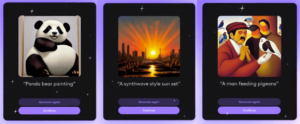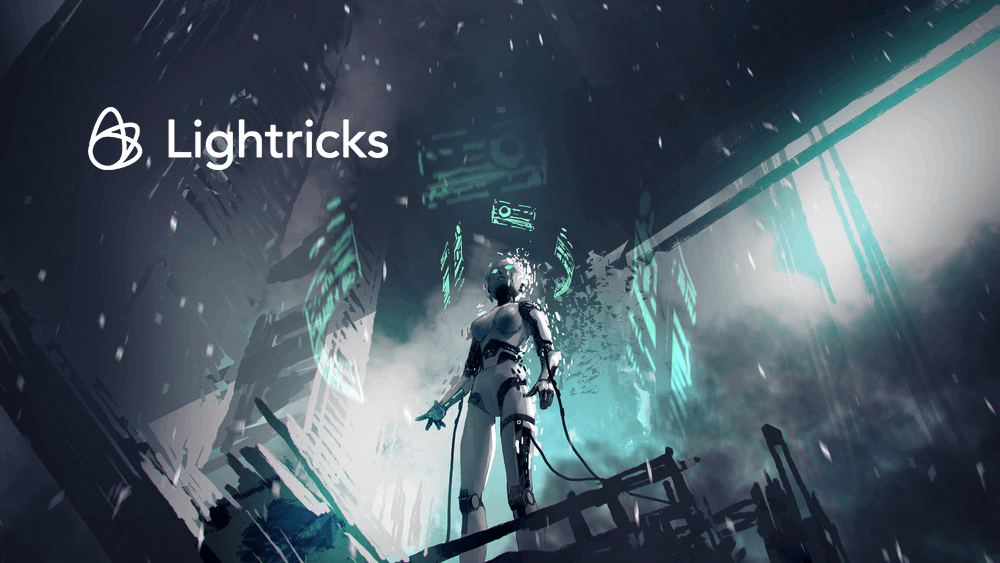Last week, Lightricks, the award-winning app developer, introduced a new text-to-image AI feature for two of its highly popular image editing apps, Photoleap and Motionleap.
This new feature allows users to automatically generate images from text descriptions, making it faster and easier than ever before to create stunning visual content. This implementation is the first of its kind to be available for mobile devices.
To access the feature, users simply need to click “Generate AI Image” at the top of the app screen, before entering a description of what they want their image to look like, and the AI will do the rest. The results are often surprisingly accurate and provide a great starting point for users to then edit and personalise their image further with the app’s wide range of tools.
“AI technology has proven its powerful capabilities when it comes to content creation,” said Lightricks CEO Zeev Farbman. “The implementation of the Text to Image feature directly within our apps opens an entire realm of possibilities for our users, giving them limitless opportunities for incredible content creation.”
Of course, this is not the first time Lightricks have been at the forefront of AI-powered content creation tools. The company’s flagship app, Facetune, was one of the first to offer users automated selfie filter effects and editing capabilities and has since become the go-to app for social media content creators around the world.
As for the text-to-image arena, there are a few other AI platforms out there that offer similar capabilities, such as Dall-E, Photosonic and Google Imagen, which have been wowing users with impressive results. However, these technologies have yet to be integrated into a mainstream consumer app that allows people to edit their creations with their smartphones.

The only thing that comes close to Lightricks’ new feature (on mobile) is TikTok’s “AI greenscreen,” which was launched earlier this month. This tool likewise allows users to produce images from text descriptions, but the results are consistently abstract in style, and they can only be used as backgrounds to video creations. This may be an intentional limitation rather than a technical one, as it allows TikTok to save on processing power and bandwidth consumption.
On the more advanced end of the spectrum, platforms such as Imagen and Parti are able to produce even more sophisticated images than the likes of Dall-E 2 and Midjourney, at least according to the COCO benchmark. However, it’s worth noting that each of these platforms is designed to cater to varying use cases, which makes a direct comparison somewhat difficult.
Such convenient access to groundbreaking, text-to-image technology begs the question of what the technical applications of these AI solutions may be. In the case of Lightricks’s products, the aim is to empower visual content creators who don’t have access to expensive resources like extensive stock libraries and production photo shoots to bring their design ideas to fruition.
Elsewhere, some of the most obvious use cases are in the field of marketing and advertising, where a company could automatically generate a range of images to test which is the most effective before settling on a final design. This would be a much faster and more efficient process than the traditional method of commissioning an artist to create several versions of an image by hand.
More from Tech
- Sequent Tech Powered the Philippines’ Big Bet on Online Elections
- Crypto Clash: Coinbase Vs. Bitget
- Crypto Clash: Kraken Vs. KuCoin
- How We Should Be Creating Better Experiences For Young People On Social Media
- Yonder Launches Premium Rewards Debit Cards To Help More People Earn Meaningful Rewards
- Tech Used for Safety and Crowd Management at Festivals
- Top Test Case Management Tools for QA Teams
- How Can Natural Language Processing Enhance CRM Interactions?
Another potential use case is for educational purposes, where AI-generated images could be used to help students visualise complex concepts that are otherwise difficult to explain with words alone.
Even professions such as architecture and fashion design could benefit from the ability to quickly create and iterate on 3D images, as it would allow them to explore a greater range of ideas in a shorter period of time.
Although, as with any new technology, there are also potential risks that need to be considered. For example, it’s not hard to imagine how this type of AI could be used to create fake news or spread misinformation. Yet, the same could be said of any AI-powered content creation tool, as we’ve recently seen with deepfakes.
Furthermore, there is also the risk of the AI generating NSFW content, which could be problematic for some users. However, this is something that Lightricks have taken into consideration, since they have implemented Google Cloud Vision API to block users from requesting such content.
As for the recent announcement, it’s clear to see that Lightricks’s new feature aligns with its overarching goal of fuelling the creator economy with its suite of high-quality content creation tools.
With the AI feature now live across two of the company’s editing apps, it will be interesting to see how users put it to use, and what new and exciting content they create as a result. If you want to give it a whirl, Photoleap is available on iOS, while Motionleap can be accessed on both iOS and Android.



